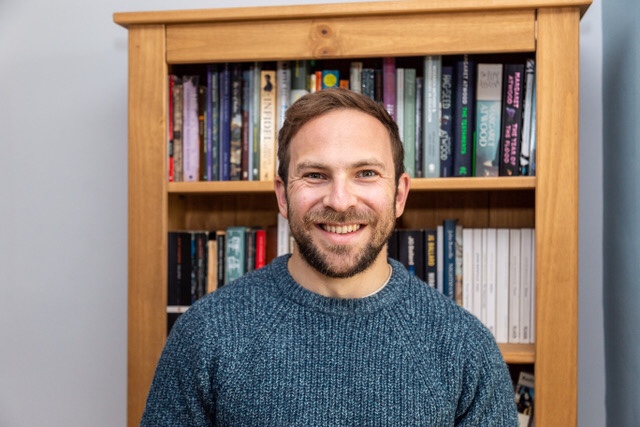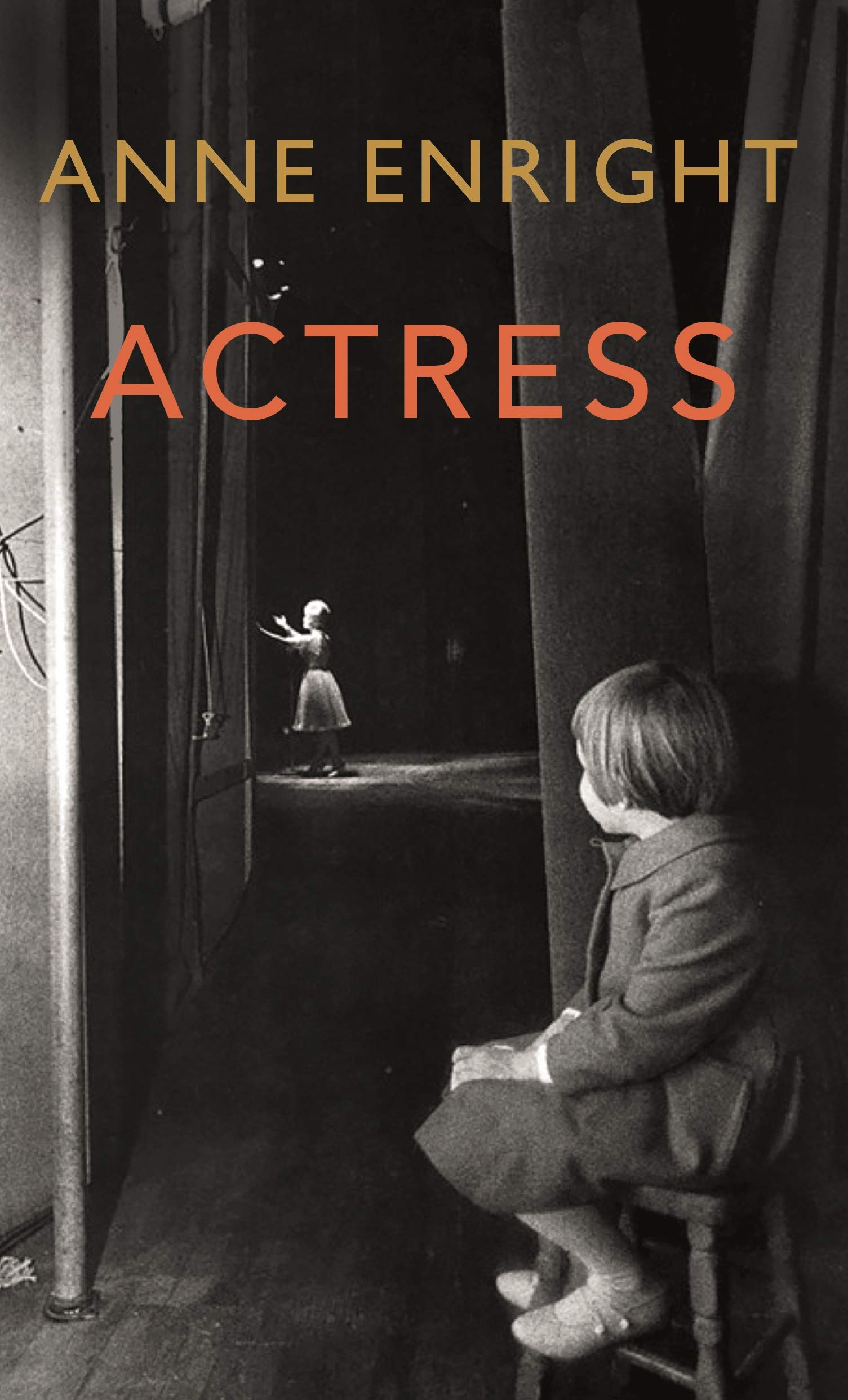In this and my next blog (also on Actress), I’m going to focus on intertextuality. Intertextuality was described by Julia Kristeva as a mosaic of interaction between texts.[1] For Kristeva, this quite commonly takes the form of deliberate and explicit intertextual references—quotations, narrative nods, character types and names—but I am most interested in intertextuality that might be construed as coincidental or serendipitous. Without ascribing any kind of motivation to these connections, I will be looking at how Anne Enright’s Actress (Jonathan Cape, 2020) reminds me of some reading I’ve been doing about the late Irish poet, Eavan Boland (1944–2020).
Enright is the Booker award-winning author of The Gathering (2007), a story of a dispersed Irish family coming back together for a funeral. As the ritual gathering and mourning processes go through their motions, violent and traumatic memories rise to the surface. Between 2015–2018 Enright was the inaugural laureate for Irish fiction. Her first novel following that post is Actress and it, like The Gathering, dives back into a fractured familial past to dredge up what’s found there.
In Actress, Norah FitzMaurice tells the story of her famous—and infamous—actor mother, Katherine O’Dell. It isn’t just a story of O’Dell’s rise and fall, but also of FitzMaurice’s search for her father—her mother never told Norah who her father was. However, as the novel progresses FitzMaurice seems finally to discover her mother amid the rubble of the past.
Early in the novel this seems eminently straightforward. When asked by a researcher, ‘”What kind of a mother was she?”‘, Norah replies simply: ‘”Well,” I said. “She was mine.”‘ (p. 20) However, this simplicity is confounded by the rest of the novel, in which Norah goes to the house in London where her mother was born. While there, she realises that
In a few months I would turn fifty-nine, which was one birthday more than she had managed on this earth. I would spin beyond her, out into uncharted space. I was about to become older than my own mother.
Anne Enright, Actress (London: Jonathan Cape), p. 34
In search of her mother’s lost time, Norah risks overtaking her and becoming a more interesting person, possessing a life better lived—and a life more likely to disappear.
Norah recounts a visit to her mother in a psychiatric hospital when she was older. There she realises how it is she can re-discover her mother. ‘I learned not to ask questions, not to oblige or manage her in any way’, she says. ‘And,’ she continues, ‘if I did this for long enough, if I was entirely neutral, then she might come close to the surface of herself. I would catch a glimmer of the person I knew.’ (p. 211) This search for Norah’s mother is a battle, both against her mother, and with her own eagerness to restore her mother to herself.
Norah reminds me of Eavan Boland, a poet who spent a large part of her career restoring women’s voices and experiences to the narratives of Irish literature. In a collection of essays, A Journey with Two Maps (W.W. Norton, 2011), she recalls a time when her father began talking to her like an adult. Most of the conversation is about male historical figures—Henry Grattan, Napoleon Bonaparte, Pericles—but then her father adds ‘that his grandmother had come from the Comeragh Mountains. That she had had to walk six miles every day for water. Six miles there. Six miles back.'[2] Suddenly, the teenage Boland is called to attention:
And then for a moment I would look up, as if someone had called my name from a distance. His grandmother. Walking the hills above Clonmel. […] She had walked there, setting out for water, bringing it back, heavy and necessary. My great-grandmother, knowing nothing about battles and orations. But nothing also about swaying dresses and flirtation and pretence.
Eavan Boland, A Journey with Two Maps (New York, NY: W.W. Norton, 2011), loc. 811 ff.
The story of her grandmother is the story that Boland didn’t know she wanted or needed, but the story that nonetheless elicits an immediate bodily and emotional reaction from her. This story takes place in the early 1960s in Dublin and, as such, is situated firmly within the time bracket given over to second-wave feminism. This feminism, characterised by notable thinkers such as Simone de Beauvoir and Germaine Greer among many others, sought legislative and social equality for women beyond the right to vote. Equality in the workplace. Equality in the home.
But Boland’s interest in narrative—the story told and untold about her grandmother—marks her out as forward-looking and more obviously a third-wave feminist. Boland’s feminism is about discourse and revisionism, about restoring women to the national narrative. Here is the connection I make between Boland and Enright’s Norah, for whom women’s pasts are under-explored, perniciously overlooked, and overly simplified.
Though Norah derides the researcher for wanting to ‘portray my mother in all her radical subjectivity, by which she meant that she wanted to de-iconise her and show her as an agent in the world’ (p. 20), Norah’s own account of her mother achieves just that. Moreover, in the end the discovery (for example) that her mother always had a false tooth (p. 211), leads also to a discovery of herself. For instance, like her mother, Norah is prone to ‘losing things. Her keys. Her car. […] That little watercolour of her father with me on his knee. My passport. Her passport. Her poet. Her sculptor. Her might-have-been’ (p. 124). Norah, likewise, loses a relic of her mother’s, a ring that she had ‘hidden’: ‘I had lost my mother’s ring by making sure I would never lose my mother’s ring.’ (p. 216) Here is the common ground between mother and daughter—or, as Boland described it, one of those moments that allow her to see ‘something of myself. A narrative I might enter’.[3]
In this, both Norah and Boland find a mother, a grandmother, and a great-grandmother. But also themselves and the possibility of the written ‘I’.
[1] See Julia Kristeva, ‘Word, Dialogue and Novel’ (1966) in The Kristeva Reader, ed. Toril Moi (New York, NY: Columbia University Press, 1986), pp. 34–61.
[2] Eavan Boland, A Journey with Two Maps (New York, NY: W.W. Norton, 2011), loc. 584–5.
[3] Boland, A Journey, loc. 589.


Leave a Reply